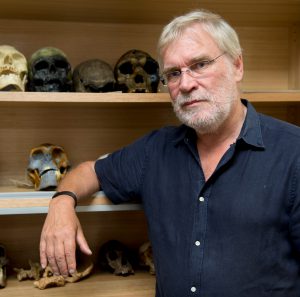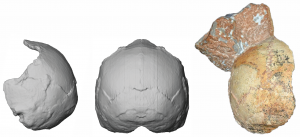A Griffith University researcher has played a key role in dating the fossil of an early human found in Greece as 210,000 years old.
The discovery of an early Homo sapiens skull inApidima, Southern Greece makes it the earliest known modern human to be found outside of Africa.

The Apidima site. Credit: Museum of Anthropology, Medical School, National and Kapodistrian University of Athens
Professor Rainer Grün, Director of Griffith’s Australian Research Centre for Human Evolution (ARCHE), was part of the international research team led by Prof KaterinaHarvatifrom the Senckenberg Centre for Human Evolution andPalaeoenvironment, at the University of Tübingen, Germany.
The study has been published in the journalNature.
The fossilfind, namedApidima1 from the site ofApidima, southern Greece, was found with another human fossil,Apidima2, during excavation by the Museum of Anthropology of the University of Athens in the late 1970s.
Apidima2 was dated at about 170,000 years old.

Professor Rainer Grun.
The research team virtually reconstructed damaged parts of the skulls,conducted comparisons with different human fossils and used radiometric dating method to determine their age.
“The two skulls were found in a breccia, just 30 cm apart. We used laser ablation U-series dating to determine the age of the two skulls. We found that the breccia itself solidified around 150,000 years ago,” Prof Grün said.
“The isotopic signatures of the two skulls are quite different indicating a minimum age of around 170 ka forApidima2 and 210 ka forApidima1. Bone remains recovered from a small breccia sample fell into the same distinct isotopic groups as the skulls.
“The most likely scenario is that there were bone deposits elsewhere in the cave system and thatsome timearound 150,000 years ago, these different deposits were washed down the solution pipe and ended up in the same solidified breccia.”
ProfHarvatisaid the discovery revealed a mixture of modern human and archaic characteristics, withApidima2 determined as a Neanderthal andApidima1 possessing characteristics that indicate it being an early Homo Sapiens.

A reconstruction of Apidima 1. Credit: Katerina Harvati
“Our results suggest that at least two groups of people lived in the Middle Pleistocene in what is now southern Greece: an early population of Homo sapiens and, later, a group of Neanderthals,” ProfHarvatisaid.
“TheAdipima1 skull shows an early dispersal happened earlier than we thought, and also reached further geographically, into Europe itself.”
The team said this supported the hypothesis that early modern humans spread out of Africa, where they evolved, multiple times.
“We hypothesize that, as in the Near East, the early modern human population represented byApidima1 was probably replaced by Neanderthals, whose presence in southern Greece is well documented, including by theApidima2 skull from the same site,” ProfHarvatisaid.
But Neanderthals also had to make way. In the latePalaeolithic, some 40,000 years ago, newly-arrived modern humans settled in the region, as in the rest of Europe. Their presence is documented by finely-worked stone tools and other finds.
Griffith Sciences IMPACT event
Learn more about early humans at Griffith Sciences’ IMPACT event When Neanderthals, Denisovans and modern humans met: what dating can tell us about human evolution.
Join Dr Katerina Douka from the School of Archaeology, University of Oxford, UK as she describes how the application of scientific methodologies, and in particular chronometric dating, helps us understand these processes. Thursday, September 26, at the QCA Lecture Theatre South Bank.
